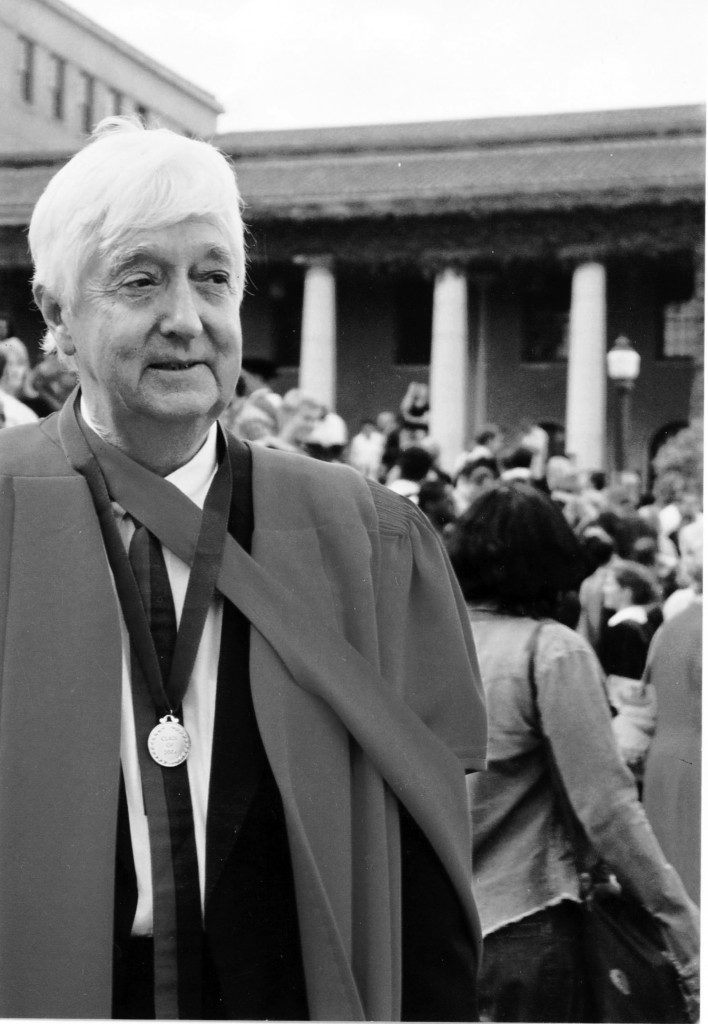Arch SA
Julian Arnold Elliott
When asked for an obituary on my father, I wondered how I should write it. Then I recalled how Roelof Uytenbogaardt, when accepting SAIA’s Gold Medal, wished that upon his death he and Gian Lorenzo Bernini could be sitting on a bench discussing architecture. I hope that Julian will now join them and that Le Corbusier is with them too – what a discussion that would be!
After graduating from the University of Cape Town, Julian had hoped to work for Le Corbusier. Instead, he worked for Frederick Gibberd in London. From there, he and Helene embarked upon the ‘Great European Architectural Tour’, with Mike and Ann Munnik.
A fellow graduate from UCT architecture school, Philipe Charbonnier invited Julian to work with him on projects in Elizabethville, in the (then) Belgian Congo. From there, he crossed over into (the then) Northern Rhodesia and settled in Ndola, where he designed a number of very fine houses accomplished within the framework of his idea of an African space.
In 1964, Julian was appointed lead architect of the new University of Zambia, Lusaka. The university buildings were conceived in a style that has since become known as ‘African Modernism’, recently documented in a European exhibition. One of Julian’s talents was his ability to collaborate with others. He did so on this university project, inviting Munnik, Dirk Visser, Ron Kirby, Dave Jack and Neil Grobbelaar, among others, to help.
In 1969, Julian and his family moved to Cape Town, where he was director of the Planning Unit at UCT. At this time, he collected material on universities, both old and new. He especially loved Cambridge and Oxford, and went to Cambridge in 1984 to do research for his book Universitas (eventually completed in 2010). The book resulted in his PhD from UCT.
Buildings conceived for UCT over those years were mostly planned by Julian and realised in collaboration with another architect, for example the Robert Leslie Building that he designed with Munnik.
A popular joke was that Julian was responsible for taking UCT ‘downhill’… This involved uniting the Upper Campus with structures around the Bremner Building, via a series of landscaped terraces. He also grouped together most of the Upper Campus libraries, to form the Linear Library. Julian loved libraries and after designing the one at University of Zambia, he got another chance to work on a library layout at UWC, with Munnik; this fine building was recipient of SAIA’s Award of Distinction.
As awards go, Julian and Ron Kirby together won a competition in the mid-1970s for the design of the Life Sciences Building at the University of the Witwatersrand. Around this time, Julian also worked with Hans Hallen on the Mangosuthu College of Technology in Durban. In later years, he designed the glass house at the Kirstenbosch National Botanical Garden, realised with the help of MLH Architects, while the Catholic Church on Pryce Drive in Constantia was a team effort with John Williams.
One of Julian’s proudest moments involved receiving an honorary doctorate from Dr Mamphela Ramphela, the then chancellor at UCT. His work falls within what has been called the ‘other tradition of modern architecture’, i.e. he sought to make buildings and public spaces meaningful to people. My father was very generous with his knowledge and shared it freely. He received the SAIA Gold Medal for Architecture in 2006.




 Sign-up and receive the Business Media MAGS newsletter OR SA Mining newsletter straight to your inbox.
Sign-up and receive the Business Media MAGS newsletter OR SA Mining newsletter straight to your inbox.